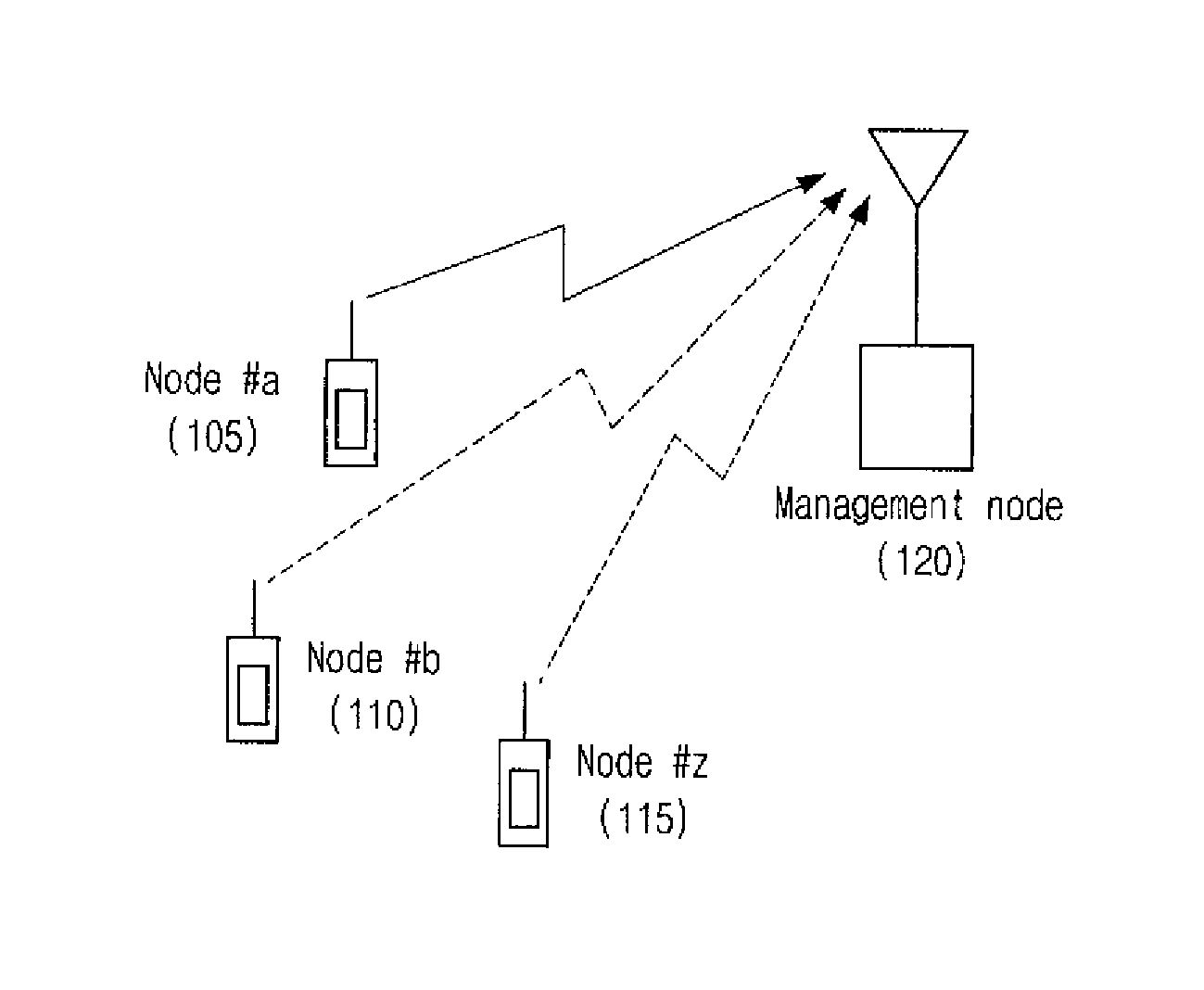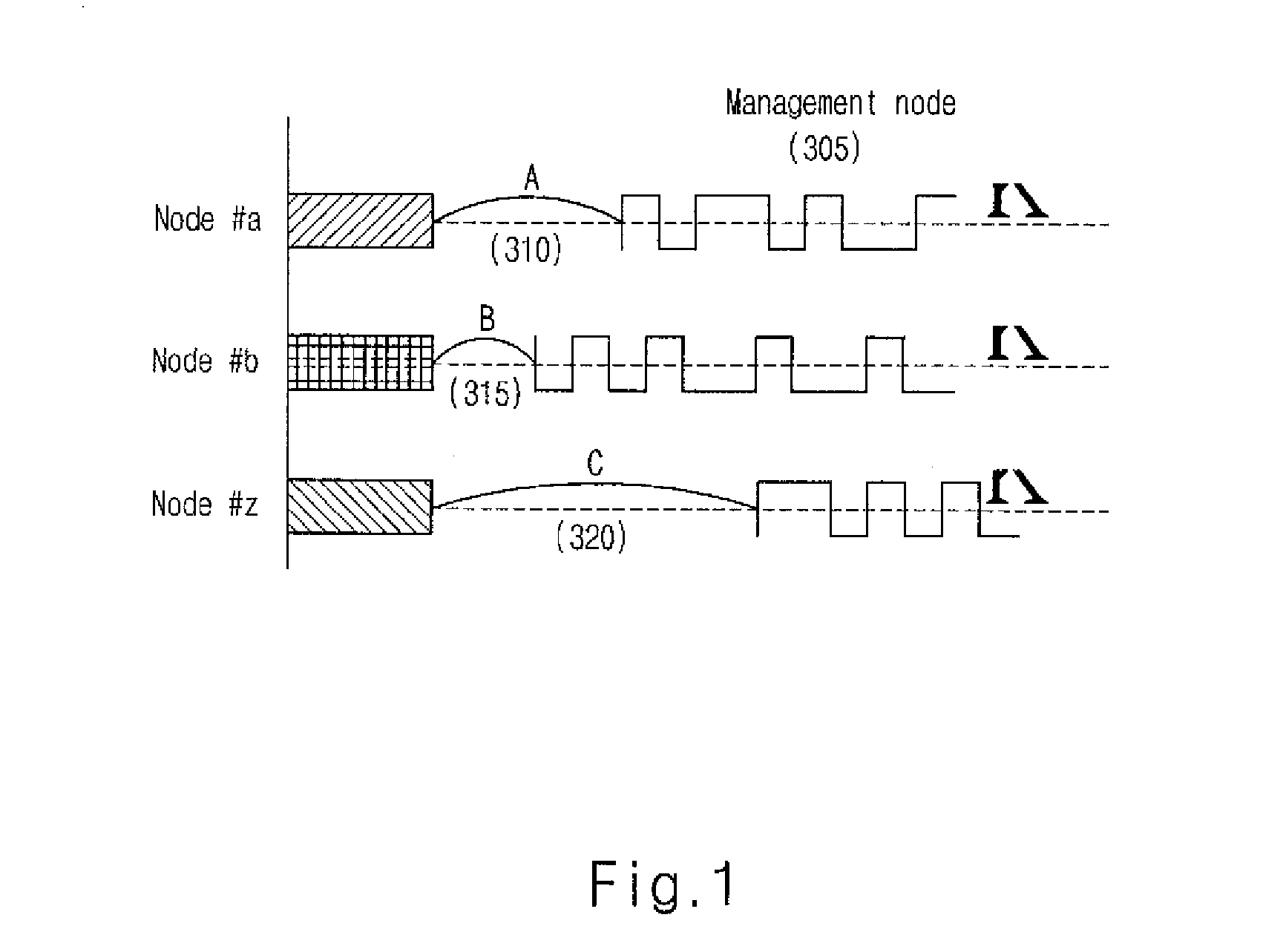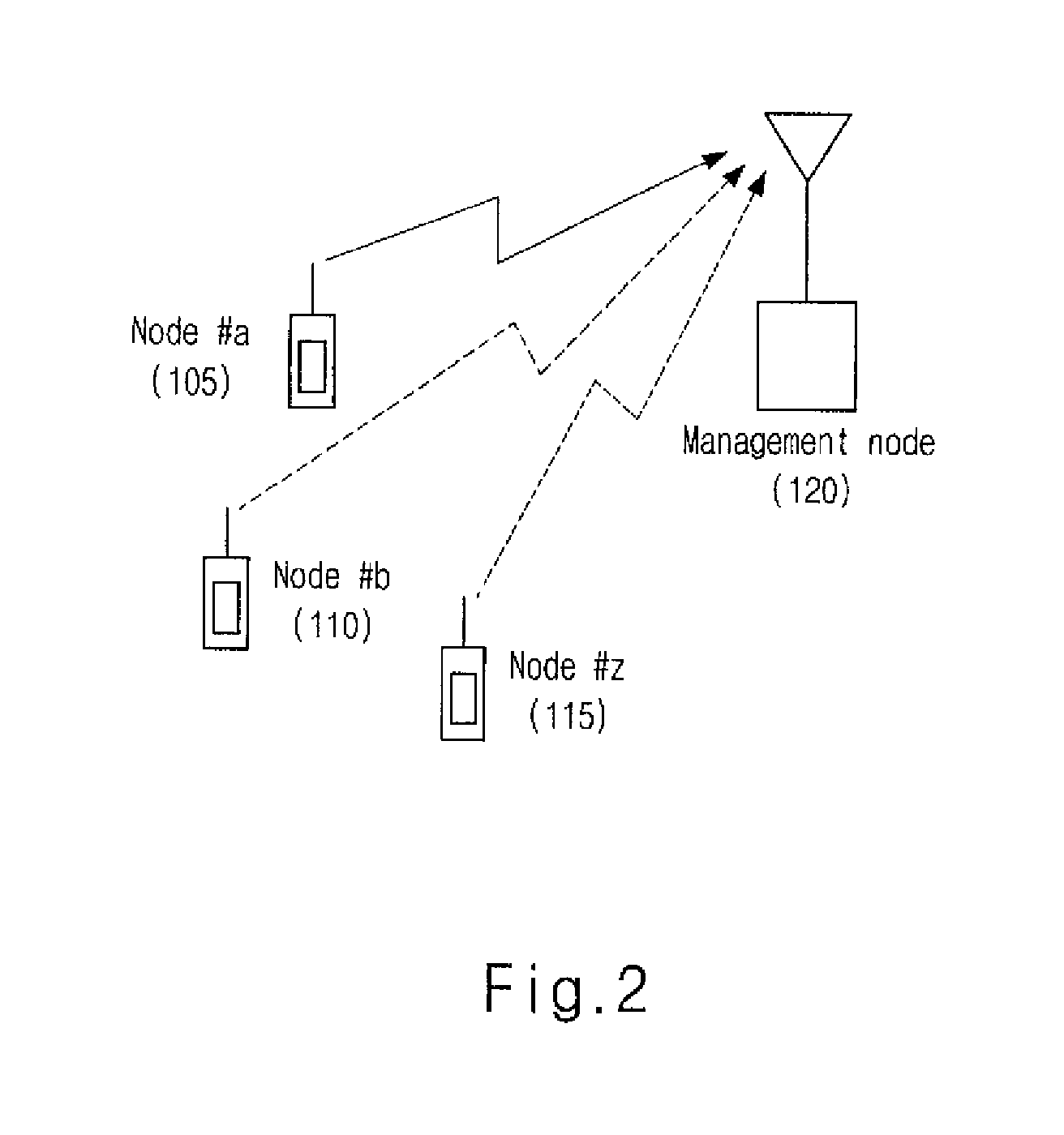Multiple access digital communicating method in ultra-wideband radio access networks
a communication method and ultra-wideband technology, applied in power management, synchronisation arrangement, high-level techniques, etc., can solve the problems of high complexity, high difficulty in sensing whether the shared channel is being used, and difficult for management nodes to manage all nodes every second
- Summary
- Abstract
- Description
- Claims
- Application Information
AI Technical Summary
Benefits of technology
Problems solved by technology
Method used
Image
Examples
Embodiment Construction
Technical Subject
[0009]Various embodiments of the present invention are directed at providing a multiple access digital communicating method in ultra-wideband (UWB) radio access networks, by providing a very efficient frame structure for UWB communication systems characterized by an effective radio access technology, low power consumption and high efficiency.
[0010]The multiple access digital communicating method according to the present invention is a radio access scheme that highly utilizes the effect of statistical multiplexing in an uplink which is not found in conventional systems for a UWB communication system where the effect of multiple path is great. According to the present invention, in a communication system where a specific management node manages nodes with low channel activity, each node attempts to communicate by using an orthogonal time hopping pattern that is pre-assigned at a certain time, and the management node distinguishes the respective nodes through their hop...
PUM
 Login to View More
Login to View More Abstract
Description
Claims
Application Information
 Login to View More
Login to View More - R&D
- Intellectual Property
- Life Sciences
- Materials
- Tech Scout
- Unparalleled Data Quality
- Higher Quality Content
- 60% Fewer Hallucinations
Browse by: Latest US Patents, China's latest patents, Technical Efficacy Thesaurus, Application Domain, Technology Topic, Popular Technical Reports.
© 2025 PatSnap. All rights reserved.Legal|Privacy policy|Modern Slavery Act Transparency Statement|Sitemap|About US| Contact US: help@patsnap.com



